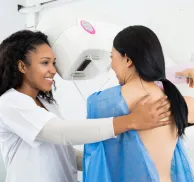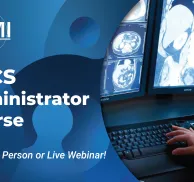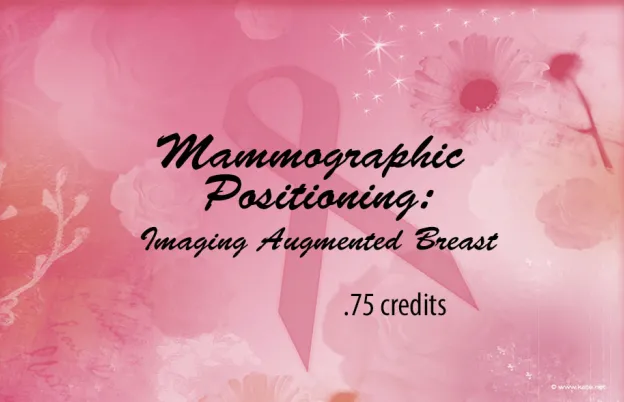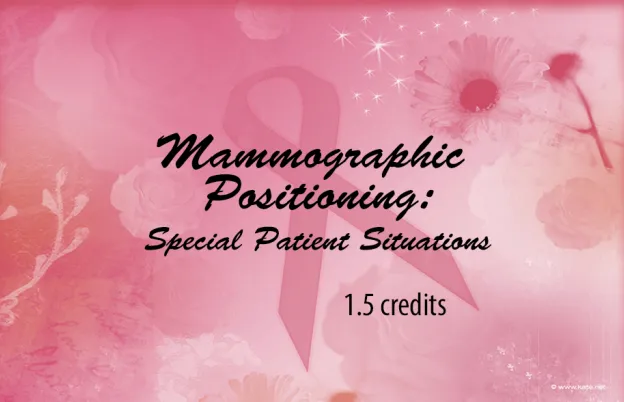
MTMI Digital Mammography
Credits
- 8.5 ASRT Category A
About this Program
Throughout this on-demand, you will learn about the FDA approved Full Field Digital Mammography machines on the market and discover their similarities and differences. A review of MQSA national statistics for accredited facilities is presented. The comparison of film-screen mammography and digital mammography is explained with images that show the differences. You will discover what is normal and what is not for quality control (QC), and what actions you need to take to return to normal functions when your QC is not normal.
Agenda:
- MQSA National Statistics
- Number of accredited facilities
- Number of 2D/3D accredited units
- Violation for yearly MQSA inspection percentages
- American Cancer Society-ACS Breast Cancer Statistics in United States
- Number of women diagnosed with invasive/non-invasive breast cancer
- Number of breast cancer survivors in the United States
- Film-Screen Images with Comparisons of FFDM with the Same Patients
- Compare with skin visualization
- Comparison of contrast
- Comparison of high detail of breast anatomy
- History of Some Previous Breast Imaging Modalities
- Xeromammography
- Film-Screen
- Mammography Imaging Tools for Enhancement and Breast Compression
- Mammography pad and Bella Blanket tools
- Breast compression reasons and new mammography curved paddles
- Basis for FFDM and New Mammography Digital Vocabulary
- Less dose compared to film-screen
- Modular transfer function-MTF and Detective Quantum Efficiency- DQE
- Window width-WW and Window Leveling-WL
- Charged Couple Device-CCD
- All FDA approved FFDM Mammography units and Unique Features
- 1st generation machines with GE and Fischer Senoscan
- 2nd generation machines with Hologic, Siemens, Fujifilm, and Planmed
- 3rd generation machines for Digital Breast Tomosynthesis-DBT
- Detector Types of Mammography Unit Conversions
- In-direct conversion
- Direct conversion
- Mammography computed radiology-MCR
- Digital Mammography Artifacts Technologist error artifacts
- Patient artifacts
- Processing artifacts
- Storage artifacts
- ACR Digital Mammography Quality Control Test
- Reasons why a facility should use the new quality control program
- All mammography technologist test
- Purpose, frequency, passing criteria, and correction action
How it Works:
- The On Demand CE activity that you purchased will be located in your “My Account” section once you log into the MTMI Website.
- You have three attempts to pass each quiz.
- You must earn a score of 75% or higher.
- Credit is recorded the day you submit and pass the quiz and is determined using Central time.
- You have 30 days to complete and pass the quiz.
- Once passed, access your MTMI “My Account” to print your “Certificate of Completion.”
- This video expires 1 year after purchase date.
Educational Objectives
At the completion of this program, participants will:
- Discover MQSA national statistics for accredited facilities and inspection violation percentages
- Review American Cancer Society -ACS breast cancer statistics and race/ethnicity risks factors
- Review Film-Screen images with comparisons of FFDM with same patient
- Discuss the history of some previous breast imaging modalities such as xeromammography and film-screen
- Name two mammography imaging tools for enhancement and breast compression
- Describe the basis for FFDM and new mammography digital vocabulary
- Name the manufacturers of FDA approved FFDM mammography machines on the market and the unique features for each manufacturer
- Discuss detector types with in-direct, direct, and mammography computed radiology-MCR conversions
- Identify digital mammography artifacts, what are they and how to avoid them
Program Faculty
Meet your presenter(s)

Deborah Davis
MSRS, RT(R)(M)(QM)
Deborah Davis has been a mammographer for almost 30 years. She was a lead mammographer at MD Anderson Cancer Center for over 25 years. Performed diagnostic and screening exams, stereotactic breast biopsies, breast localizations, executed quality control, and mobile mammography. She retired in December 2023, but works part time. Deborah has taught continuing education in mammography since 2006, and has been with MTMI since 2020. Deborah created a mammography curriculum at the University of Texas MD Anderson School of Health Professions and lead the program for four years before retiring. She continues to teach portions of the initial mammography program including digital breast tomosynthesis 8-hour requirement. She also teaches several other mammography continuing education courses. Breast health is her compassion and she continues to share her experiences and knowledge to allow the future generations to continue the fight.
Credits
Accredited training programs

ASRT Category A
This program provides 8.5 hour(s) of Category A continuing education credit for radiologic technologists approved by ASRT and recognized by the ARRT® and various licensure states. Category A credit is also recognized for CE credit in Canada. You must attend the entire program to receive your certificate of completion.










 at checkout.
at checkout.